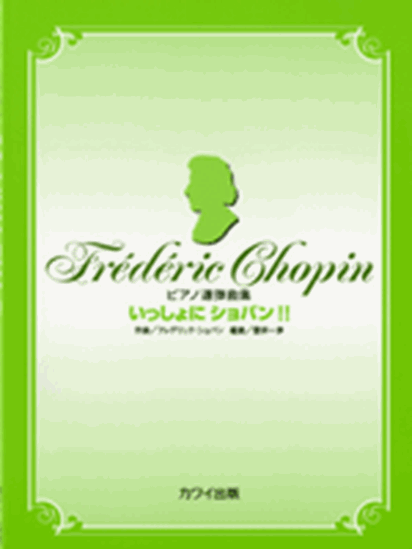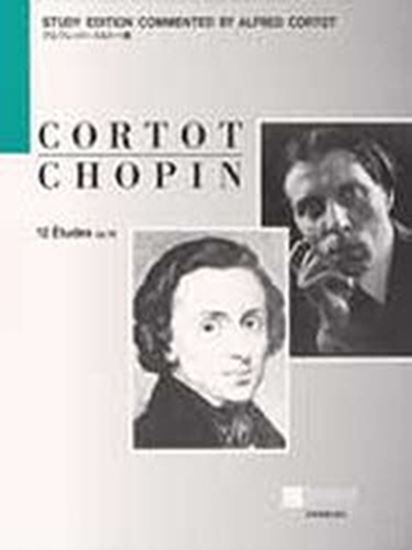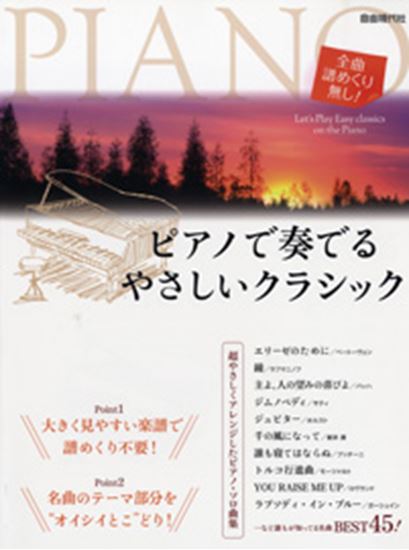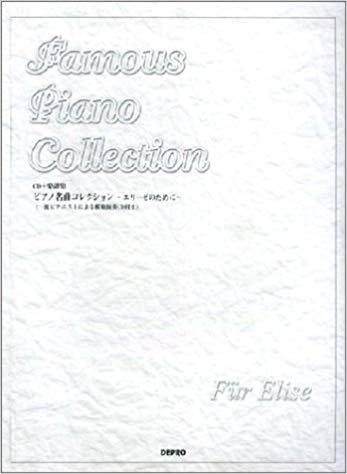Chopin, Frederic : 12 études Etude No.3 E-Dur Op.10-3
Work Overview
Genre:etude
Total Playing Time:4 min 30 sec
Copyright:Public Domain
Commentary (2)
Author : Imazeki, Shiori
Last Updated: August 7, 2019
[Open]
Author : Imazeki, Shiori
Composed on August 25, 1832.
Sources
- Sketch (held at the Morgan Library & Museum, New York, call number Cary 144)
- Autograph manuscripts are held at the Fryderyk Chopin Museum in Warsaw (M/192) and the Robert Lehman Collection in New York.
The common name, 'Farewell Waltz' (or 'Tristesse'), became established because this piece was used as the theme song in the German biographical film about Chopin, Abschiedswalzer (The Farewell Waltz), released in 1934.
The tempo markings in the two existing autograph manuscripts differ: the manuscript in the Lehman Collection is marked 'Vivace,' while the one in the Chopin Museum is marked 'Vivace ma non troppo.' These are believed to have been changed to 'Lento' by Chopin at the time of publication. This alteration is thought to have been made to further enhance the lyrical quality of the work, as Chopin reportedly told his pupil Gutmann, 'I have never in my life created such a beautiful song.' The differentiation of the inner voices, melody, and bass between both hands is presented as a crucial challenge.
The piece is in ternary form: A (mm. 1-21) - B (mm. 22-61) - A (mm. 62-77). The middle section (B), in contrast to A, features intense modulations and gradually reveals a more agitated character. Double sixths, moving symmetrically as if reflected in a mirror, appear for eight measures (mm. 46-53), reaching the peak of their passion before the lyrical A theme and the tonic key return.
According to musicologist Jim Samson, the existing autograph manuscript contains the instruction 'Presto con fuoco (immediately following).' This suggests that the present work is conceived as a pair with the passionate Ballade No. 4.
Author : Ooi, Kazurou
Last Updated: March 12, 2018
[Open]
Author : Ooi, Kazurou
No. 3 in E Major, "Tristesse" (Farewell Song)
A key point of this piece is to bring out the top note of chords without sounding harsh, even in the densest passages. However, the B section remains the primary challenge. For learners with small hands, in particular, the B section becomes exceptionally difficult. I have devised some strategies to make it playable even for those with small hands, which I hope will be helpful. Please note that the absence of musical examples makes the explanation quite challenging.
In the B section, Chopin writes pairs of 16th notes that span across bar lines. Since explanations using terms like 'on the beat' or 'off the beat' can be very confusing, I will explain it by referring to the 'first pair of 16ths,' the 'second pair,' and so on.
First, let's look at measures 42 and 44. The method is the same for both, so once you understand how to play measure 42, you can apply the same technique to measure 44. Measure 42 contains four pairs of 16th notes. Strictly speaking, it's three and a half, with the second note of the fourth pair extending into the next measure (m. 43), but for now, we will consider it 'four pairs.' This is quite simple. Let's start with the first pair: D# B and A F#.
In this case, play D# B F# with the right hand, and only A with the left hand. This means the right hand plays three notes and the left hand plays one. Normally, all four notes would be played by the right hand, but instead, we will enlist the help of the left hand. The next pair is supposed to be played by the left hand, but instead, as before, play D# B F# with the right hand and A with the left hand. The third and fourth pairs are played in the same way. Apply the same technique to measure 44. This should make it much easier for those with small hands.
Furthermore, let's consider measure 46 onwards. This section is challenging even for those with average-sized hands, and even more so for those with small hands. From here on, I will also explain in terms of pairs.
Measure 46:
- 1st pair: Right hand: D1 B5 G#1 F5 / Left hand: D5 B1 G#4 F1
- 2nd pair: Right hand: F1 D3 B1 G#4 / Left hand: F5 D1 B5 G#1
- 3rd pair: Right hand: C1 A5 F#1 D#5 / Left hand: C4 A1 F#4 D#1
- 4th pair: Right hand: D#1 C3 A1 F#4 / Left hand: D#5 C1 A5 F#2
Measure 47:
- 1st pair: Right hand: C1 A5 F#1 D#4 / Left hand: C5 A1 F#4 D#1
And so on. In essence, this involves shifting fingerings like 5-2, 4-1, etc., by one 16th note within each pair. This should make it easier. Please try it.
Other Points to Note:
In measure 21, the right-hand ornament (G# and F#) should not be re-struck, as the G# is tied from the G# in the previous measure. Some editions may not show this tie, leading performers to re-strike the G# in measure 21. However, Chopin absolutely never used such repeated notes. It is clearly a misprint.
Arrangements & Related Works(17)
Godowsky(Godowski), Leopold: 53 Studies on Chopins etudes *in preparation* Des-Dur
Key: Des-Dur Total Performance Time: 5 min 00 sec
yamaha music foundation & yamaha music media corporation: 大人のためのピアノ悠々塾 初級編 改訂版 12 études Etude No.3 E-Dur
Key: E-Dur Total Performance Time: 2 min 00 sec
Todoroki, Chihiro: きらきらピアノ こどものピアノ名曲集1 ショパン
Total Performance Time: 1 min 10 sec
Takashima, Asako: 別れの曲(原曲:ショパン)
Total Performance Time: 2 min 00 sec
Noda, Teruyuki: (Chopin) Étude op. 10-3
Composition Year: 1980 Total Performance Time: 3 min 10 sec
PTNA & Partner Channel Videos(6items)
Sheet MusicView More
Scores List (131)

(株)ドレミ楽譜出版社

(株)全音楽譜出版社

(株)全音楽譜出版社

(株)全音楽譜出版社

(株)全音楽譜出版社

(株)全音楽譜出版社

(株)全音楽譜出版社

(株)全音楽譜出版社

(株)全音楽譜出版社

(株)全音楽譜出版社

(株)ドレミ楽譜出版社

(株)ドレミ楽譜出版社

(株)音楽之友社

(株)サーベル社

ミュージックランド

カワイ出版

(株)サーベル社

ミュージックランド

(株)ドレミ楽譜出版社

(株)シンコーミュージックエンタテイメント

KMP(ケイ・エム・ピー) ケイエムピー

ミュージックランド

KMP(ケイ・エム・ピー) ケイエムピー

(株)リットーミュージック

ミュージックランド

(株)シンコーミュージックエンタテイメント

ミュージックランド

(株)リットーミュージック

(株)ドレミ楽譜出版社

(株)リットーミュージック

(株)学研プラス

ミュージックランド

(株)タイムリーミュージック

KMP(ケイ・エム・ピー) ケイエムピー

(株)ドレミ楽譜出版社

ミュージックランド

(株)シンコーミュージックエンタテイメント

(株)ドレミ楽譜出版社

(株)リットーミュージック

ミュージックランド

ミュージックランド

(株)シンコーミュージックエンタテイメント

(株)リットーミュージック

ミュージックランド

(株)全音楽譜出版社

(株)ヤマハミュージックエンタテインメントホールディングス

(株)シンコーミュージックエンタテイメント

(株)全音楽譜出版社

ハンナ(ショパン)

(株)ヤマハミュージックエンタテインメントホールディングス

(株)ヤマハミュージックエンタテインメントホールディングス

(株)ヤマハミュージックエンタテインメントホールディングス

(株)ドレミ楽譜出版社

(株)ヤマハミュージックエンタテインメントホールディングス

カワイ出版

ハンナ(ショパン)

ミュージックランド

ミュージックランド

ミュージックランド

(株)シンコーミュージックエンタテイメント

(株)ドレミ楽譜出版社

(株)ドレミ楽譜出版社

(株)シンコーミュージックエンタテイメント

KMP(ケイ・エム・ピー) ケイエムピー

(株)ヤマハミュージックメディア

(株)シンコーミュージックエンタテイメント

(株)シンコーミュージックエンタテイメント

(株)シンコーミュージックエンタテイメント

ハンナ(ショパン)

(株)リットーミュージック

(株)ドレミ楽譜出版社

(株)共同音楽出版社

(株)ヤマハミュージックエンタテインメントホールディングス

(株)ヤマハミュージックエンタテインメントホールディングス

(株)シンコーミュージックエンタテイメント

KMP(ケイ・エム・ピー) ケイエムピー

(株)シンコーミュージックエンタテイメント

ハンナ(ショパン)

ハンナ(ショパン)

(株)ヤマハミュージックエンタテインメントホールディングス

KMP(ケイ・エム・ピー) ケイエムピー

ハンナ(ショパン)

ハンナ(ショパン)

(株)ヤマハミュージックエンタテインメントホールディングス

(株)ヤマハミュージックエンタテインメントホールディングス

(株)ヤマハミュージックエンタテインメントホールディングス

(株)ドレミ楽譜出版社

(株)シンコーミュージックエンタテイメント

(株)ヤマハミュージックエンタテインメントホールディングス

ミュージックランド

(株)ヤマハミュージックエンタテインメントホールディングス

(株)ドレミ楽譜出版社

ミュージックランド

デプロMP

(株)ヤマハミュージックメディア

(株)全音楽譜出版社

ミュージックランド

(株)ドレミ楽譜出版社

(株)シンコーミュージックエンタテイメント

(株)自由現代社

(株)ヤマハミュージックエンタテインメントホールディングス

ミュージックランド

(株)シンコーミュージックエンタテイメント

KMP(ケイ・エム・ピー) ケイエムピー

(株)ドレミ楽譜出版社

(株)ヤマハミュージックエンタテインメントホールディングス

(株)シンコーミュージックエンタテイメント

ジェスク音楽文化振興会

(株)全音楽譜出版社

ヘンレー

ヘンレー

ヘンレー

ジェスク音楽文化振興会

(株)全音楽譜出版社

ヘンレー

ポーランド音楽出版社

(株)ヤマハミュージックエンタテインメントホールディングス

ロケットミュージック

(株)音楽之友社

(株)ヤマハミュージックエンタテインメントホールディングス

(株)ヤマハミュージックエンタテインメントホールディングス

(株)学研プラス

Musikverlag Doblinger

(株)ヤマハミュージックエンタテインメントホールディングス




















